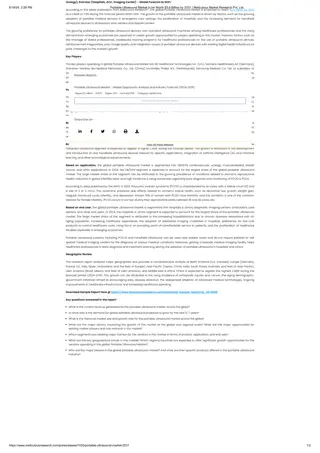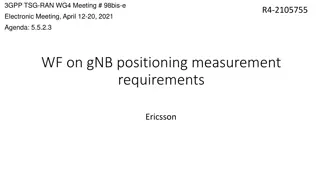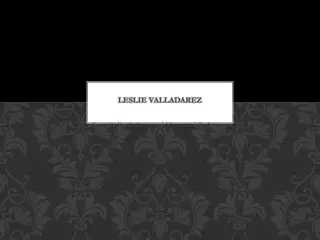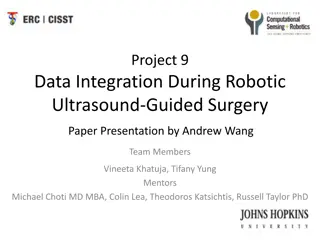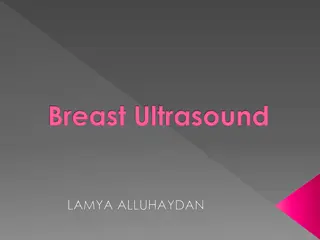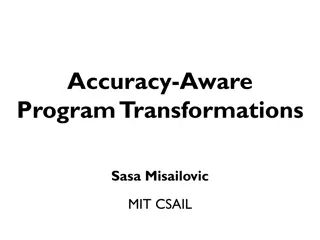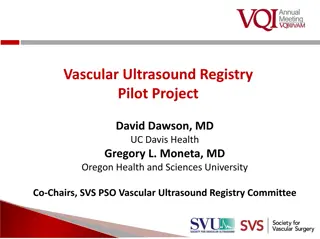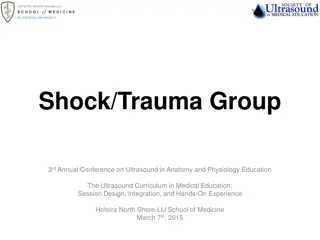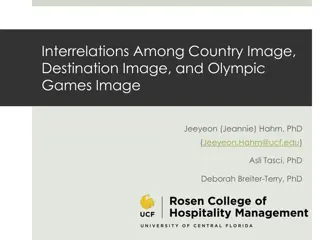Mastering Ultrasound Image Optimization: Enhancing Diagnostic Accuracy
Ultrasound imaging requires applied knowledge and control of technical parameters for optimal image quality and accurate interpretation. Operators must select appropriate transducers, manipulate controls, and customize presets to maximize diagnostic information while following safety principles. Modern transducers offer various frequencies for different anatomical areas, and operator controls such as frequency, depth, gain, and Doppler help optimize images for specific structures. Understanding how to adjust settings like field of view and scan area is crucial in obtaining high-quality ultrasound images for different depths and structures.
Download Presentation

Please find below an Image/Link to download the presentation.
The content on the website is provided AS IS for your information and personal use only. It may not be sold, licensed, or shared on other websites without obtaining consent from the author.If you encounter any issues during the download, it is possible that the publisher has removed the file from their server.
You are allowed to download the files provided on this website for personal or commercial use, subject to the condition that they are used lawfully. All files are the property of their respective owners.
The content on the website is provided AS IS for your information and personal use only. It may not be sold, licensed, or shared on other websites without obtaining consent from the author.
E N D
Presentation Transcript
It is essential for those working with Ultrasound to have an applied knowledge of image optimisation. Controlling technical parameters can vastly enhance image quality. Misinterpretation of images is a significant risk in ultrasound imaging; with skill required to both maximise the diagnostic information and interpret images appropriately.
Ultrasound equipment generally have anatomical area pre-sets. Applications specialists can assist in the customisation of these in clinical practice. Operators must select the most appropriate transducer and pre-set and manipulate optimisation controls continually to obtain the best quality images to inform and support examination findings, whilst adhering to the ALARA principle.
Modern Broadband transducers offer a selection of operating frequencies. Transducers vary in size as well as frequency selection. Anatomical size and location in addition to depth will help dictate transducer selection (i.e. small hockey stick high frequency transducer suitable for Metatarsophalangeal Joint scanning).
There are a number of operator controls available to optimise Ultrasound images. Fundamental controls include: Frequency Depth Sector width (line density) Gain Focus/focal zones Doppler
High frequencies should be selected to interrogate superficial Musculoskeletal structures. Deeper structures including the hip, shoulder and knee may require reduced frequency to obtain adequate penetration.
Depth or field of view function Used to determine area of scan field Depth required dependant on structure of interest More depth-deeper structures Less depth- superficial structures Maximum depth dependant upon operating frequency/patient size or structure location/beam penetration.
The sector width (sometimes called scan area) can be reduced or extended dependant on the required field of view. More scan lines (collecting data) in smaller area results in increased image quality Image quality and frame rate will increase with a smaller sector width It is wise to note that image land-marking is essential for retrospective review to assist in anatomical area recognition. A larger field of view may be required to include a neighbouring reference joint. A trackball is generally used to adjust sector width in & out.
Overall Gain is usually a dial control- similar to turning the volume up on a stereo this amplifies returning echo s across the whole image (Turn up (clockwise) brightens image and turn down darkens image). Time Gain Control (TGC) is generally a slider bar which allows the operator to select specific image depths for amplification. TGC is useful in amplifying deep returning echo s which would otherwise appear brighter due to increased attenuation.
The focus control is often a dial or toggle button with position and number indicated on screen. Produces a thinner beam. Adjusting the focal zone to the area (or just behind the area) of interest will increase resolution therefore image quality. This is achieved by a series of time delays where the peripheral elements are fired first followed by the central elements resulting in the scan lines reaching a particular area of interest at the same time.
Multiple focal zones can be applied e.g. interrogation of a tendon may warrant a superficial and deep focal zone corresponding to the tendon borders. Increasing the number of focal zones results in a reduction of frame rate as an additional pulse along the scan line is required. With multiple focal zones, the increased time taken for the additional transmit and return echo s can cause the image to appear a bit disjointed with time lag.
Power Doppler can identify slow flow and is particularly useful in identifying synovitis. It is imperative to adjust the pulse repetition frequency (PRF) and colour gain (similar to overall gain but amplifies Doppler signals within the colour box) to ensure that images are representative of anatomy and pathology. A high PRF can result in oversampling the tissue therefore unable to detect slow flow. A low PRF is adopted to allow low amplitude slow flow detection. Low PRF required for low flow.
A colour Doppler box can be sized and positioned over a standard B-mode image to assess blood flow. Colour Doppler assigns positive and negative Doppler shifts to a colour (typically red and blue). This informs direction of flow towards or away from the transducer. The Doppler shift frequency is angle dependant with very small or no signals produced at an angle of 90 degrees. Angles of insonation of between 30-60 degrees should be achieved for representative Doppler data (using a rocking or heel toe transducer manoeuvre may help). Small colour box = greater frame rate = more real time images.
Spectral Doppler data can be achieved by selecting this option over a colour Doppler image. This applies a range gate to the colour Doppler image and based on the principle of detecting frequency shift can determine velocity of flow. This can be appreciated in velocity graphs with a velocity scale indicator. Seldom used in Musculoskeletal imaging field.
Highest frequency for penetration Small sector width Appropriate Gain/TGC Adequate depth for structure Appropriately positioned focus/no. of focal zones Small Doppler box Low Doppler PRF for low flow NB: Adequate image quality not always achievable



